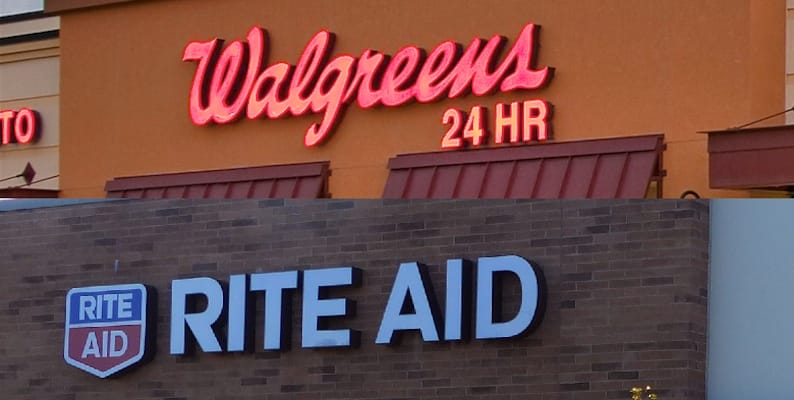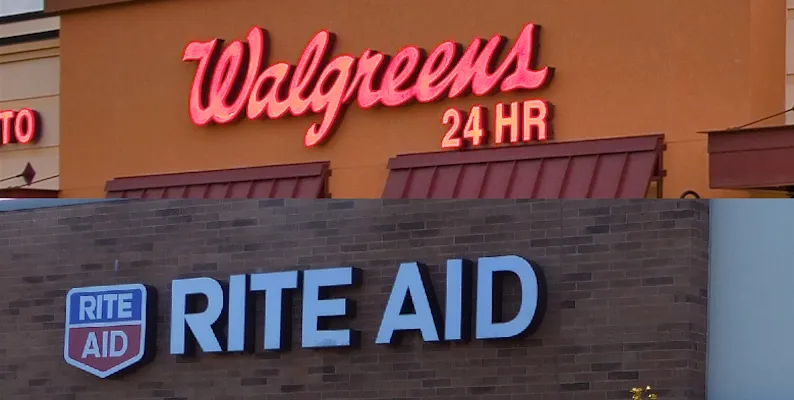
DEERFIELD, Ill. — Walgreens Boots Alliance (WBA) said it’s working on store divestiture scenarios with the Federal Trade Commission to gain clearance for its $17.2 billion deal to acquire Rite Aid Corp.
WBA said Thursday that it and Rite Aid “remain actively engaged” in talks with the FTC as the regulator reviews the acquisition, which was announced on Oct. 27.
“As a result of the progress of these discussions with the FTC staff, Walgreens Boots Alliance is exploring potential divestiture remedies to address certain issues raised in those discussions,” WBA said in a statement.
Updating its previous estimate, WBA said it now appears that more than 500 Walgreens and/or Rite Aid stores will need to be divested, but the company “still continues to expect that fewer than 1,000 stores will be required to be divested.”
“In addition, the company continues to believe that the acquisition will close in the second half of calendar 2016,” WBA stated.
WBA previously indicated that it’s willing to divest up to 1,000 stores to gain regulatory approval but expects divestitures to be less than half that number. Together, Walgreens and Rite Aid would create the largest U.S. chain drug retailer, with more than 12,700 stores.
In reporting third-quarter results on July 6, WBA said the Rite Aid acquisition is “progressing as planned” and that WBA “is continuing its integration planning.” And in a conference call that day, WBA executive vice chairman and chief executive officer Stefano Pessina told financial analysts, “We still believe that our initial estimate is correct. We still believe that at the end we will stay in the range of the stores [to be divested] that we initially indicated, around 500.”
Also on Thursday, WBA said it expects the acquisition to be accretive to its adjusted earnings per share in the first full year after the deal is finalized, based on its current outlook for store divestitures. The company added that it continues to expect acquisition synergies of over $1 billion, which would be fully realized within three to four years after the transaction is completed.
“These synergies have been updated where practicable and, as previously disclosed, are expected to be derived primarily from procurement, cost savings and other operational matters,” WBA said.
WBA’s update on the merger comes after recent media reports named Kroger Co. as a possible buyer of divested Walgreens and/or Rite Aid stores. CVS Health — currently the largest retail pharmacy operator, with about 9,600 locations — has also been mentioned in published reports as a potential bidder for stores since the WBA-Rite Aid deal was announced. Financial analysts have said that FTC approval of the deal may hinge on the presence of one or more large, financially solid companies ready to buy stores flagged for divestiture.
Walgreens, which already has stores in all 50 states, has said that the addition of Rite Aid will fill gaps in the Northeast and Southern California. Meanwhile, the Northeast and Mid-Atlantic appear to be where Rite Aid will bring the biggest benefit in coverage for Walgreens.
Currently, Walgreens has 8,150 stores in 50 states, the District of Columbia, Puerto Rico and the U.S. Virgin Islands, while Rite Aid operates 4,560 stores in 31 states and D.C.
Wolfe Research analyst Scott Mushkin recently noted that the WBA-Rite Aid combination would create significant share concentration in many U.S. markets, which looms as a hurdle for regulatory approval of the merger.
“While we have long believed that the transaction seems to go directly against the FTC/DOJ guidelines, one possibility could be that the FTC requires more store divestitures than is being contemplated by the merger agreement,” Mushkin wrote in a July 20 research note. “Aside from finding viable purchasers for the stores, which we believe will be a challenge, this may be the path of least resistance, although it could lead to a lower purchase price for Rite Aid if the divested stores are above the threshold.”
In a report last week on WBA financing for the deal, Fitch Ratings said Walgreens now holds 20% of the U.S. prescription market, while Rite Aid has a 6% share. Besides gaining procurement and cost structure benefits from a larger scale, the merger would significantly expand WBA’s market reach, the rating agency observed.
“Rite Aid would improve WBA’s national retail coverage, particularly in Southern California and Northeastern U.S. markets, positioning it well to compete for inclusion in narrow and preferred pharmacy networks,” Fitch stated. “At the end of fiscal 2015, 76% of U.S. households operated within a five-mile radius of a Walgreens or Duane Reade, and Fitch anticipates the coverage is likely to rise to the mid- to high-80% range at the close of the acquisition.”









